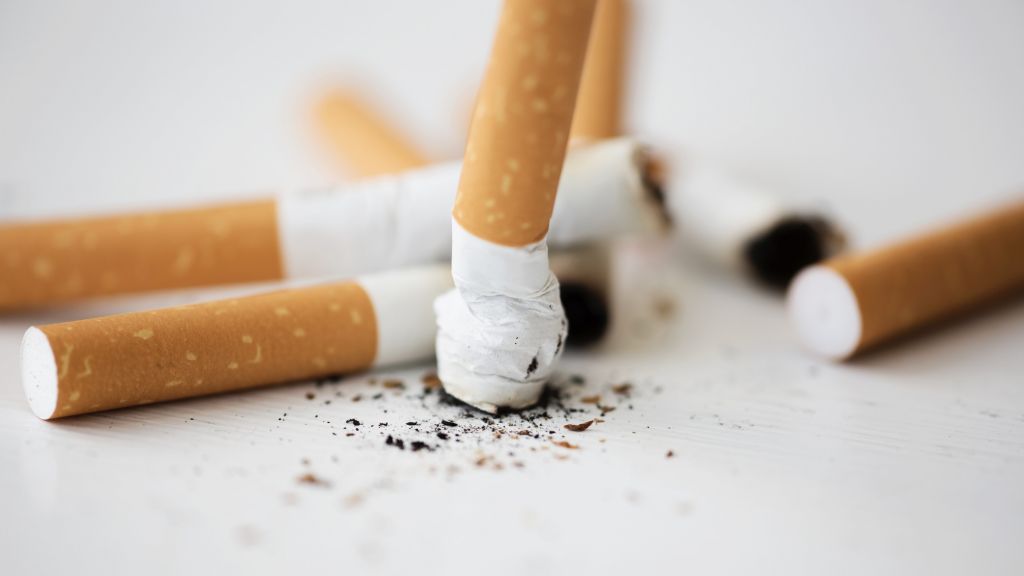There is something more that we need to mention about Laura and the reason why she decided to remain single: she does not trust men. This is not only because of the negative experience she had with her father in her childhood, losing the one who should have been her male role model, but also because she knows men who do not deserve her trust. Laura knows that the majority of men are involved with some type of pornography. How could she have a relationship with a man who possibly would be comparing her with supposedly perfect actresses? How could she accept someone as a husband whose heart has been stained by perverted sex?
“Friends” of our friend Paul tried to convince him that it would be good for him and his marriage to watch some of “those films.” However, he knew the cause of the coldness in his marriage. It was not the lack of something erotic or something “spicy” but the lack of love, companionship, and dialog—things day-to-day stress was stealing from him.
Besides this, how could he watch pornography and then look into the pure eyes of his two little children, especially his little girl, who enjoyed writing sweet love letters to him? One day his daughter would grow up, and he could never conceive of the idea that she could end up being treated as a sexual object before cameras, just for the enjoyment of an audience with lustful eyes and dirty minds. Fortunately, Paul was among the minority of men who avoided pornography.
The problem becomes even more serious when we realize that children have easy access to pornography. According to an analysis of 3.5 million searches on the Internet between 2008 and 2009, the words sex and porn were among the ten most searched for by kids.
(“Kids’ Top Searches Include ‘Porn,’ ” BBC News, August 12, 2009, http://news.bbc.co.uk/2/hi/technology/8197143.stm.)
Effects of porn consumption
A study carried out by Padua University in Italy found that 70 percent of young men who sought out neurologists because of unsatisfactory sexual performance admitted to frequently viewing pornography on the Internet. Other behavioral studies suggest that the loss of libido takes place because individuals who spend a great amount of time viewing pornography are suppressing the brain’s natural response to pleasure. Years substituting the natural limits of libido for intense stimulation will result in damage to these men’s response to dopamine. This neurotransmitter is behind desire, motivation, and addictions. It directs the search for rewards. Once pleasure is strongly linked to pornography, real sex seems to no longer offer a reward. So this would be the cause for the lack of desire in many men.
(“Italian Men Suffer ‘Sexual Anorexia’ After Internet Porn Use,” Ansa, March 4, 2011, http://www.ansa.it/web/notizie/rubriche/english /2011/02/24/visualizza_new.html_1583160579.html; “Is Internet Pornography Causing Sexual Dysfunctions? A Review With Clinical Re- ports,” Behavioral Sciences 6, no. 3 (2016): 17, doi:10.3390/bs6030017; D. Pizzol, A. Bertoldo, and C. Foresta, “Adolescents and Web Porn: A New Era of Sexuality,” International Journal of Adolescent Medicine and Health 28, no. 2 (May 2016): 169–173, doi:10.1515/ijamh-2015-0003.)

In his book Wired for Intimacy: How Pornography Hijacks the Male Brain, William Struthers of Wheaton College draws on neuroscience to explain why pornography is so addictive to the male mind. It’s all about intimacy: men seek everything from pornography to prostitutes in their pursuit of satisfying their deepest emotional needs. “They are driven to seek out sexual intimacy,” he says.
(Albert Mohler, “Hijacking the Brain: How Pornography Works,” personal blog, February 1, 2010, http://www.albertmohler .com/2010/02/01/hijacking-the-brain-how-pornography-works.)
According to Struthers, viewing pornographic images creates new patterns in the brain’s wiring, and the habit reinforces the rewiring. (Ibid.) At this point, the comparison to the addictive effects of drug consumption becomes unavoidable: “Tolerance is when, as a result of exposure to the substance, the body adjusts so that later exposure to the same levels of the substance results in a lesser effect. If I take the same dose of a drug over and over and my body begins to tolerate it, I will need to take a higher dose of the drug in order for it to have the same effect that it did with a lower dose the first time.” (William M. Struthers, Wired for Intimacy: How Pornography Hijacks the Male Brain (Downers Grove, IL: IVP, 2009), 76.) Therefore, sex addiction “acts as a polydrug, delivering emotional and sensory excitation and energizing a man sexually.” (Ibid., 69.)
How to identify sexual addiction
If you observe in yourself, your spouse, or a friend or family member two, three, or more of the following behaviors, this could indicate a case of sexual addiction. You should speak to the individual in a calm manner, without accusations, and with an attitude of assistance:

1. An individual insists on staying in front of the computer or television when no one is home or everyone else is asleep.
2. An individual keeps a small case, backpack, drawer, or closet with a key, and no one in the family or at work can have access to this location.
3. An individual contemplates members of the opposite sex for a long time after they pass by.
4. An individual receives charges on their credit card for which they have no explanation.
5. An individual arrives very late from work or is absent more than necessary, using travel and professional obligations as a justification.
6. When the individual is on the Internet and someone comes near, the individual quickly changes the screen.
7. The individual does not have sexual relations with their spouse, or desires it in extravagant ways.
8. The individual is emotionally distant from their spouse.
9. The individual seems to be absent and distracted even at the most intimate moments.
10. The individual demonstrates an abrupt change in mood and threatening behavior.
How to overcome sexual addiction
The psychological process is similar to any other addiction. Much advice for chemical dependence is also valid for sexual addiction:
1. The first step is to admit the problem and demonstrate a willingness to correct this behavior.
2. Seek the support of another individual. The best person is the spouse of the addict (under the guidance of a specialist). If this is not possible, then it could be a friend or close family member.
3. Always be vigilant (do not stay alone for very long; continue planned activities).
4. Maintain absolute sexual sobriety; engage in sex only with one’s spouse.
5. Make use of structured help mechanisms; block certain environments on the Internet and limit the time of Internet access.
6. Plan recreational activities, preferably outdoors and in different locations from the usual.
7. This tendency could have its origin in sexual abuse in childhood or in a troubled childhood. In this case, the plan of rehabilitation should be accompanied by formal psychotherapy to go deeper into matters of the past and eliminate conflicts.
8. For the support individual: be compassionate and treat the addict as someone who is ill, who needs to recover. He or she needs to accept his or her responsibility. Once responsibility has been taken and the individual has decided to become accountable, he or she should not be blamed or criticized excessively for the unacceptable conduct. The addict needs compassion, sympathy, and support.
Addicted to cigarettes
In many countries the use of cigarettes has decreased. However, in some countries cigarette use continues to rise. The cigarette is especially popular among youth. Nicotine has a high power to cause addiction and represents a barrier for giving up this habit. If you want to stop smoking, follow these steps:

1. Examine your habits. Are there particular objectsor situations that increase your desire to smoke? Reconsider these circumstances and avoid them, or prepare yourself to resist: when you go to bed, get up, have breakfast, are at a gathering with friends, when you sit in your favorite chair, when you are alone someplace, when you finish a meal, et cetera. Avoid smoking in these situations.
2. Look for new environments. Change your schedule, your meetings and customary locations. Participate in healthy activities outdoors and in environments that are relaxing.
3. Include your friends and family. Tell all of them that you have decided to stop smoking. They will support you. If possible, join someone who also wants to give up the habit, and when you meet, encouragement can be both given and received.
4. Watch your diet. Detoxification should be accompanied by many fruits and vegetables. Drink lots of water and citrus fruit juices. This will help to eliminate the nicotine from your system, and your desire for cigarettes will gradually decrease.
5. Exercise. Physical exercise will relax the tension of detoxification and will encourage a positive mood.
6. Give yourself a reward. Establish compensations after several days of success—go to a special place or buy an article of clothing with the money you have saved from not smoking.
7. Seek support in the spiritual dimension. Many addicts disregard this step and are unsuccessful in their attempt to quit. Pray to God as though you were talking to a friend and ask for strength to overcome this habit.
Dangerous caffeine
Many think that caffeine is not a drug. However, the psychiatric manual DSM-5 considers caffeine intoxication at the point when an individual ingests 250 milligrams or more in a single day (for example: more than two to three cups of drip-brewed coffee). The “energy” drinks can have more caffeine than coffee.
(G. Richards and A. Smith, “Caffeine Consumption and Self- assessed Stress, Anxiety, and Depression in Secondary School Children,” Journal of Psychopharmacology 29, no. 12 (December 2015): 1236–1247, doi:10.1177/0269881115612404.) The effects of consumption of caffeine are restlessness, nervousness, insomnia, diuresis, flushed face, muscle twitching, gastrointestinal disturbance, rambling flow of thought and speech, tachycardia, and psychomotor agitation. (Subin Park; Yeeun Lee; Junghyun H. Lee, “Association Between Energy Drink Intake, Sleep, Stress, and Suicidality in Korean Adolescents: Energy Drink Use in Isolation or in Combination With Junk Food Consumption,” Nutrition Journal 15, no. 1 (October 2016): 87; G. S. Trapp et al., “Energy Drink Consumption Is Associated With Anxiety in Australian Young Adult Males,” Depression and Anxiety 31, no. 5 (May 2014): 420–428, doi:10.1002/da.22175.)

The following products contain varying quantities of caffeine:
| Product | Size | Caffeine |
|---|---|---|
| Black tea | 8 oz. / 237 mL | 14–70 mg |
| Cola soft drinks | 12 oz. / 355 mL | 23–40 mg |
| Dark chocolate–coated coffee beans | 28 pieces | 336 mg |
| Energy drinks | 8 oz. / 237 mL | 70–100 mg |
| Espresso, restaurant-style | 1 oz. / 30 mL | 47–75 mg |
| Instant coffee | 8 oz. / 237 mL | 27–173 mg |
(Mayo Clinic Staff, “Caffeine Content for Coffee, Tea, Soda and More,” Mayo Clinic, http://www.mayoclinic.org/healthy-lifestyle /nutrition-and-healthy-eating/in-depth/caffeine/art-20049372, last updated May 30, 2014.)
Vicious circle
Happiness has been defined as the total absence of addiction. This includes addictions to “heavy” or illegal drugs, compulsive sex, gambling, video games, and the Internet. It also includes common substances that cause addictions, such as alcohol, cigarettes, and coffee. These substances are called psychoactive because they affect mental function. In addition, some people are addicted to such things as diets, medications, or even physical exercise.

The vicious circle of drugs is very dangerous. Whether they are legal or illegal, or contain chemical components or not, they bring harm to one’s health. All addictions take away the freedom of those who suffer from this dependence. Furthermore, they cause very serious risks:
Dependence. Drugs or chemical dependence create the desire to continue usage. The more that the individual satisfies this desire, the greater the desire becomes for further usage.
Tolerance. The drug user needs larger and larger doses to obtain effects similar to prior use.
Abstinence syndrome. Addicts can feel a psychological state of extreme agitation when they do not have access to the desired substance or cannot carry out the desired behavior. It can also be a physical experience; the body is habituated to the substance and cannot obtain the dosage desired. Abstinence symptoms include: insomnia, agitation, heart palpitations, perspiration, nausea, vomiting, and others.
Effects on the brain (in chemical dependence). Drugs attack the central nervous system. When an addictive substance reaches the brain, several vital functions are altered, and the individual becomes incapable of accomplishing simple mental activities. When consumption takes place over a long period, irreversible lesions can develop.
The first three risks are not only associated with the chemically dependent but also relate to individuals addicted to certain behaviors. The individual addicted to pornography, for example, feels a strong desire to repeat the activity. After a certain time, the images viewed are not sufficient, and the individual needs stronger or more obscene images. The lack of availability of the images will produce extreme agitation or frustration in the addict.
How to prevent addictions
The majority of addicts, especially those addicted to substances, begin initial use when they are preteens or teenagers. For this reason, preventive measures should be focused on these age-groups. Beginning with their first years in school, children should receive instruction regarding drugs and their risks. School programs should have a place for talks and seminars presented by relevant individuals (former addicts, doctors, lawyers, psychologists, police officers, social workers, etc.).
As a matter of principle, all schools and other learning institutions should be declared drug-free areas, adopting measures to avoid becoming centers for drug trafficking or locations where children and teens are introduced to drugs.
The parents of children and youth also have responsibility for prevention. They should talk about the problem, adopting the following strategies:
– Have a firm and coherent position regarding drugs and addictions.
– Mold healthy self-esteem in their children.
– Maintain a stable and safe home environment.
– Demonstrate flexibility in opinions and behavior, yet maintain well-defined limits.
– Give an irreproachable example in reference to addictions.

Authorities also have an important role in education against addictions and in favor of total health: attractive and persuasive programs, the use of legal precautions (for example: necessary labeling on alcoholic beverages and on cigarettes), rules that regulate the sale and distribution, and so on. It is extremely important to suppress drug trafficking in schools and other institutions and locations where children and youth gather.
When it comes to other addictions (work, sex, gambling), these may survive into adulthood. It is indispensable to remember that with these addictions, as well as chemical dependence, anxiety frequently adds to the problem. For this reason, one way to prevent involvement in an addiction is to overcome anxiety.
How to overcome addictions
It has been proven that the individual cannot give up addictions on their own. The addict needs social, professional, and spiritual support. For this reason, the advice presented here is especially directed toward the family or to the addict’s support system:
– If the addict has made many attempts already to give up the addiction, he or she should be encouraged to seek a rehabilitation center.
– Support the plan established by the center or the qualified professional. Trust in the treatment, and encourage the addict (child, spouse, friend, etc.).
– Avoid overprotection and enabling. It is a great temptation to protect the people we love. However, in these circumstances it is necessary to remain firm regarding the treatment.
– Reward accomplishments. The addict needs external reinforcement to reach new objectives. Rewards can include food, films, outings, games, books, or visits, according to preferences and circumstances.
– Prepare a calm, healthy, and adequate environment to keep the addict far from the atmosphere that facilitates the addiction (locations, people, objects, etc.), because triggers can lead the addict into a relapse.
Support groups are excellent methods for overcoming addictions. For example, Alcoholics Anonymous (AA), Narcotics Anonymous (NA), Gamblers Anonymous (GA), and Sex and Love Addicts Anonymous (SLAA) have high rates of success among participants. The addict, in meeting with others who suffer from the same problem, will strive with greater persistence.

It is imperative to recognize that the power addiction holds over a person is so great that many overcome only through the help of God. The success of Alcoholics Anonymous (AA) is due in part to human support, demonstrated by the experience of former alcoholics, and to the support of God, who is accepted by those who through faith are willing to receive Him.
After attaining initial success, the struggle does not end, because the risk of relapse is very high. Therefore, it is important to carefully plan the return to normality by observing the following areas:
Employment
The rehabilitated individual may need a new job, with new colleagues and with a firm purpose toward reintegration, without falling back into the addiction.
Social atmosphere
For a long period in recovery, the rehabilitated individual needs someone who continues to carefully and firmly observe his or her environment. He or she should have relationships with people who know how to enjoy life without the use of chemical substances or other addictions, living simply and naturally.
Leisure time
Free time is the most dangerous for a potential relapse and should be carefully planned, including physical exercise, outdoor activities, sports, et cetera. Always avoid bars, game rooms, and other environments where desire for the addiction can be triggered.
Spiritual life
The spiritual component is also fundamental in reintegration. The life of addictions now belongs to the past, and the individual should begin a new life. Guilt, which is common among former addicts, finds forgiveness in a loving Father. And in relation to the future, God promises protection and continuous support.
A wonderful promise from God for those who struggle against addiction is this: “So do not fear, for I am with you; do not be dismayed, for I am your God. I will strengthen you and help you” (Isaiah 41:10).
Codependence
With the intention of rendering help to those who are chemically dependent, some begin a dangerous path: the relationship of mutual dependence. This problem is frequent in the family of the addict. Although with good intentions, the individual (mother, father, or sibling) ends up struggling in the wrong manner for the addict. The individual demonstrates blind love, ceding to the addict’s insistent requests. The individual utilizes a large part of his or her time, effort, and emotional energy but ends up being an obstacle toward recovery. It is fundamental to seek external professional help to put an end to this dangerous collateral effect.

The 12 steps
1. We admitted we were powerless over our addiction—that our lives had become unmanageable.
2. We came to believe that a Power greater than ourselves could restore us to sanity.
3. We made a decision to turn our will and our lives over to the care of God as we understood God.
4. We made a searching and fearless moral inventory of ourselves.
5. We admitted to God, to ourselves and to another human being the exact nature of our wrongs.
6. We were entirely ready to have God remove all these defects of character.
7. We humbly asked God to remove our shortcomings.
8. We made a list of all persons we had harmed, and became willing to make amends to them all.
9. We made direct amends to such people wherever possible, except when to do so would injure them or others.
10. We continued to take personal inventory, and when we were wrong promptly admitted it.
11. We sought through prayer and meditation to improve our conscious contact with God as we understood God, praying only for knowledge of God’s will for us and the power to carry that out.
12. Having had a spiritual awakening as the result of these steps, we tried to carry this message to other addicts, and to practice these principles in all our affairs.
These support groups have achieved considerable success for decades. The fundamental principles are: trust in God as the main authority and source of power; total sobriety as a goal; commitment to help people who want to abandon their addictions; and confidentiality among participants.
The content of this post is taken from The Power of Hope — Overcoming depression, anxiety, guilt, and stress, authored by Julián Melgosa and Michelson Borges.
Julián Melgosa holds a doctorate in educational psychology from Andrews University. A member of the British Psychological Society, he was a university professor and is the author of various articles and books in the area of emotional health.
Michelson Borges is a journalist with a master’s in theology from Brazil Adventist University. He is the editor of “Vida e Saúde” (Life and Health magazine), is a seminar presenter and has authored books on media, science and religion.





